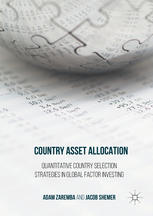

Most ebook files are in PDF format, so you can easily read them using various software such as Foxit Reader or directly on the Google Chrome browser.
Some ebook files are released by publishers in other formats such as .awz, .mobi, .epub, .fb2, etc. You may need to install specific software to read these formats on mobile/PC, such as Calibre.
Please read the tutorial at this link: https://ebookbell.com/faq
We offer FREE conversion to the popular formats you request; however, this may take some time. Therefore, right after payment, please email us, and we will try to provide the service as quickly as possible.
For some exceptional file formats or broken links (if any), please refrain from opening any disputes. Instead, email us first, and we will try to assist within a maximum of 6 hours.
EbookBell Team

4.8
34 reviewsThis book demonstrates how quantitative country-level investment strategies can be successfully employed to manage money in international markets. It offers a range of state-of-the-art quantitative strategies, describing their theoretical bases, implementation details, and performance in over 70 countries between 1995 and 2015.
International diversification has long been a key to stable investing. However, the increased integration and openness of global financial markets has led to rising correlations between stock market returns in particular countries, driving down the benefits of diversification and increasing the importance of country selection strategies as part of an investment process. Zaremba and Shemer explain the efficiency of quantitative investing, which captures huge amounts of data of limited scope very quickly. In the traditional approach, this data compilation is an immense undertaking, limited in scope and vulnerable to behavioral errors, but this can be overcome with the help of a new paradigm of quantitative investment at the country level. Quantitative country asset allocation can be efficiently accomplished by using wealth insights that have been generated in the academic literature, discovering many anomalies and regular patterns in asset prices. Armed with this information, investors and managers can process large amounts of data more efficiently when deciding to invest in ETFs, index funds, or futures markets.